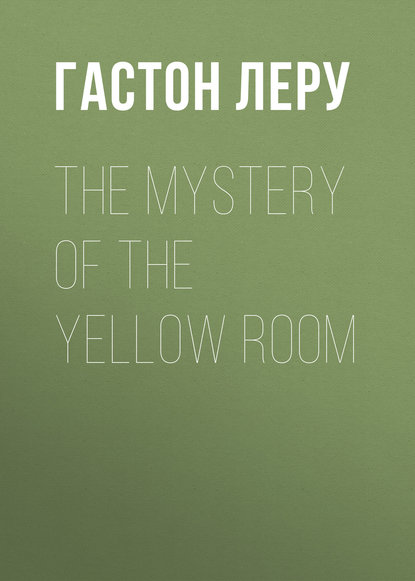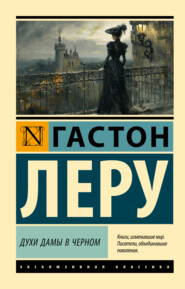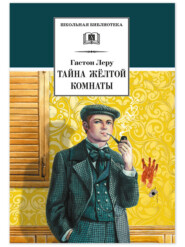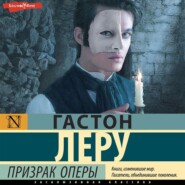По всем вопросам обращайтесь на: info@litportal.ru
(©) 2003-2025.
✖
The Mystery of the Yellow Room
Автор
Год написания книги
2018
Настройки чтения
Размер шрифта
Высота строк
Поля
“Is it Mademoiselle Stangerson you are pitying?”
“Yes; she’s a noble woman and worthy of being pitied!—a woman of a great, a very great character—I imagine—I imagine.”
“You know her then?”
“Not at all. I have never seen her.”
“Why, then, do you say that she is a woman of great character?”
“Because she bravely faced the murderer; because she courageously defended herself—and, above all, because of the bullet in the ceiling.”
I looked at Rouletabille and inwardly wondered whether he was not mocking me, or whether he had not suddenly gone out of his senses. But I saw that he had never been less inclined to laugh, and the brightness of his keenly intelligent eyes assured me that he retained all his reason. Then, too, I was used to his broken way of talking, which only left me puzzled as to his meaning, till, with a very few clear, rapidly uttered words, he would make the drift of his ideas clear to me, and I saw that what he had previously said, and which had appeared to me void of meaning, was so thoroughly logical that I could not understand how it was I had not understood him sooner.
CHAPTER IV. “In the Bosom of Wild Nature”
The Chateau du Glandier is one of the oldest chateaux in the Ile de France, where so many building remains of the feudal period are still standing. Built originally in the heart of the forest, in the reign of Philip le Bel, it now could be seen a few hundred yards from the road leading from the village of Sainte-Genevieve to Monthery. A mass of inharmonious structures, it is dominated by a donjon. When the visitor has mounted the crumbling steps of this ancient donjon, he reaches a little plateau where, in the seventeenth century, Georges Philibert de Sequigny, Lord of the Glandier, Maisons-Neuves and other places, built the existing town in an abominably rococo style of architecture.
It was in this place, seemingly belonging entirely to the past, that Professor Stangerson and his daughter installed themselves to lay the foundations for the science of the future. Its solitude, in the depths of woods, was what, more than all, had pleased them. They would have none to witness their labours and intrude on their hopes, but the aged stones and grand old oaks. The Glandier—ancient Glandierum—was so called from the quantity of glands (acorns) which, in all times, had been gathered in that neighbourhood. This land, of present mournful interest, had fallen back, owing to the negligence or abandonment of its owners, into the wild character of primitive nature. The buildings alone, which were hidden there, had preserved traces of their strange metamorphoses. Every age had left on them its imprint; a bit of architecture with which was bound up the remembrance of some terrible event, some bloody adventure. Such was the chateau in which science had taken refuge—a place seemingly designed to be the theatre of mysteries, terror, and death.
Having explained so far, I cannot refrain from making one further reflection. If I have lingered a little over this description of the Glandier, it is not because I have reached the right moment for creating the necessary atmosphere for the unfolding of the tragedy before the eyes of the reader. Indeed, in all this matter, my first care will be to be as simple as is possible. I have no ambition to be an author. An author is always something of a romancer, and God knows, the mystery of The Yellow Room is quite full enough of real tragic horror to require no aid from literary effects. I am, and only desire to be, a faithful “reporter.” My duty is to report the event; and I place the event in its frame—that is all. It is only natural that you should know where the things happened.
I return to Monsieur Stangerson. When he bought the estate, fifteen years before the tragedy with which we are engaged occurred, the Chateau du Glandier had for a long time been unoccupied. Another old chateau in the neighbourhood, built in the fourteenth century by Jean de Belmont, was also abandoned, so that that part of the country was very little inhabited. Some small houses on the side of the road leading to Corbeil, an inn, called the “Auberge du Donjon,” which offered passing hospitality to waggoners; these were about all to represent civilisation in this out-of-the-way part of the country, but a few leagues from the capital.
But this deserted condition of the place had been the determining reason for the choice made by Monsieur Stangerson and his daughter. Monsieur Stangerson was already celebrated. He had returned from America, where his works had made a great stir. The book which he had published at Philadelphia, on the “Dissociation of Matter by Electric Action,” had aroused opposition throughout the whole scientific world. Monsieur Stangerson was a Frenchman, but of American origin. Important matters relating to a legacy had kept him for several years in the United States, where he had continued the work begun by him in France, whither he had returned in possession of a large fortune. This fortune was a great boon to him; for, though he might have made millions of dollars by exploiting two or three of his chemical discoveries relative to new processes of dyeing, it was always repugnant to him to use for his own private gain the wonderful gift of invention he had received from nature. He considered he owed it to mankind, and all that his genius brought into the world went, by this philosophical view of his duty, into the public lap.
If he did not try to conceal his satisfaction at coming into possession of this fortune, which enabled him to give himself up to his passion for pure science, he had equally to rejoice, it seemed to him, for another cause. Mademoiselle Stangerson was, at the time when her father returned from America and bought the Glandier estate, twenty years of age. She was exceedingly pretty, having at once the Parisian grace of her mother, who had died in giving her birth, and all the splendour, all the riches of the young American blood of her parental grandfather, William Stangerson. A citizen of Philadelphia, William Stangerson had been obliged to become naturalised in obedience to family exigencies at the time of his marriage with a French lady, she who was to be the mother of the illustrious Stangerson. In that way the professor’s French nationality is accounted for.
Twenty years of age, a charming blonde, with blue eyes, milk-white complexion, and radiant with divine health, Mathilde Stangerson was one of the most beautiful marriageable girls in either the old or the new world. It was her father’s duty, in spite of the inevitable pain which a separation from her would cause him, to think of her marriage; and he was fully prepared for it. Nevertheless, he buried himself and his child at the Glandier at the moment when his friends were expecting him to bring her out into society. Some of them expressed their astonishment, and to their questions he answered: “It is my daughter’s wish. I can refuse her nothing. She has chosen the Glandier.”
Interrogated in her turn, the young girl replied calmly: “Where could we work better than in this solitude?” For Mademoiselle Stangerson had already begun to collaborate with her father in his work. It could not at the time be imagined that her passion for science would lead her so far as to refuse all the suitors who presented themselves to her for over fifteen years. So secluded was the life led by the two, father and daughter, that they showed themselves only at a few official receptions and, at certain times in the year, in two or three friendly drawing-rooms, where the fame of the professor and the beauty of Mathilde made a sensation. The young girl’s extreme reserve did not at first discourage suitors; but at the end of a few years, they tired of their quest.
One alone persisted with tender tenacity and deserved the name of “eternal fiance,” a name he accepted with melancholy resignation; that was Monsieur Robert Darzac. Mademoiselle Stangerson was now no longer young, and it seemed that, having found no reason for marrying at five-and-thirty, she would never find one. But such an argument evidently found no acceptance with Monsieur Robert Darzac. He continued to pay his court—if the delicate and tender attention with which he ceaselessly surrounded this woman of five-and-thirty could be called courtship—in face of her declared intention never to marry.
Suddenly, some weeks before the events with which we are occupied, a report—to which nobody attached any importance, so incredible did it sound—was spread about Paris, that Mademoiselle Stangerson had at last consented to “crown” the inextinguishable flame of Monsieur Robert Darzac! It needed that Monsieur Robert Darzac himself should not deny this matrimonial rumour to give it an appearance of truth, so unlikely did it seem to be well founded. One day, however, Monsieur Stangerson, as he was leaving the Academy of Science, announced that the marriage of his daughter and Monsieur Robert Darzac would be celebrated in the privacy of the Chateau du Glandier, as soon as he and his daughter had put the finishing touches to their report summing up their labours on the “Dissociation of Matter.” The new household would install itself in the Glandier, and the son-in-law would lend his assistance in the work to which the father and daughter had dedicated their lives.
The scientific world had barely had time to recover from the effect of this news, when it learned of the attempted assassination of Mademoiselle under the extraordinary conditions which we have detailed and which our visit to the chateau was to enable us to ascertain with yet greater precision. I have not hesitated to furnish the reader with all these retrospective details, known to me through my business relations with Monsieur Robert Darzac. On crossing the threshold of “The Yellow Room” he was as well posted as I was.
CHAPTER V. In Which Joseph Rouletabille Makes a Remark to Monsieur Robert Darzac Which Produces Its Little Effect
Rouletabille and I had been walking for several minutes, by the side of a long wall bounding the vast property of Monsieur Stangerson and had already come within sight of the entrance gate, when our attention was drawn to an individual who, half bent to the ground, seemed to be so completely absorbed in what he was doing as not to have seen us coming towards him. At one time he stooped so low as almost to touch the ground; at another he drew himself up and attentively examined the wall; then he looked into the palm of one of his hands, and walked away with rapid strides. Finally he set off running, still looking into the palm of his hand. Rouletabille had brought me to a standstill by a gesture.
“Hush! Frederic Larsan is at work! Don’t let us disturb him!”
Rouletabille had a great admiration for the celebrated detective. I had never before seen him, but I knew him well by reputation. At that time, before Rouletabille had given proof of his unique talent, Larsan was reputed as the most skilful unraveller of the most mysterious and complicated crimes. His reputation was world-wide, and the police of London, and even of America, often called him in to their aid when their own national inspectors and detectives found themselves at the end of their wits and resources.
No one was astonished, then, that the head of the Surete had, at the outset of the mystery of “The Yellow Room”, telegraphed his precious subordinate to London, where he had been sent on a big case of stolen securities, to return with all haste. Frederic who, at the Surete, was called the “great Frederic,” had made all speed, doubtless knowing by experience that, if he was interrupted in what he was doing, it was because his services were urgently needed in another direction; so, as Rouletabille said, he was that morning already “at work.” We soon found out in what it consisted.
What he was continually looking at in the palm of his right hand was nothing but his watch, the minute hand of which he appeared to be noting intently. Then he turned back still running, stopping only when he reached the park gate, where he again consulted his watch and then put it away in his pocket, shrugging his shoulders with a gesture of discouragement. He pushed open the park gate, reclosed and locked it, raised his head and, through the bars, perceived us. Rouletabille rushed after him, and I followed. Frederic Larsan waited for us.
“Monsieur Fred,” said Rouletabille, raising his hat and showing the profound respect, based on admiration, which the young reporter felt for the celebrated detective, “can you tell me whether Monsieur Robert Darzac is at the chateau at this moment? Here is one of his friends, of the Paris Bar, who desires to speak with him.”
“I really don’t know, Monsieur Rouletabille,” replied Fred, shaking hands with my friend, whom he had several times met in the course of his difficult investigations. “I have not seen him.”
“The concierges will be able to inform us no doubt?” said Rouletabille, pointing to the lodge the door and windows of which were close shut.
“The concierges will not be able to give you any information, Monsieur Rouletabille.”
“Why not?”
“Because they were arrested half an hour ago.”
“Arrested!” cried Rouletabille; “then they are the murderers!”
Frederic Larsan shrugged his shoulders.
“When you can’t arrest the real murderer,” he said with an air of supreme irony, “you can always indulge in the luxury of discovering accomplices.”
“Did you have them arrested, Monsieur Fred?”
“Not I!—I haven’t had them arrested. In the first place, I am pretty sure that they have not had anything to do with the affair, and then because—”
“Because of what?” asked Rouletabille eagerly.
“Because of nothing,” said Larsan, shaking his head.
“Because there were no accomplices!” said Rouletabille.
“Aha!—you have an idea, then, about this matter?” said Larsan, looking at Rouletabille intently, “yet you have seen nothing, young man—you have not yet gained admission here!”
“I shall get admission.”
“I doubt it. The orders are strict.”
“I shall gain admission, if you let me see Monsieur Robert Darzac. Do that for me. You know we are old friends. I beg of you, Monsieur Fred. Do you remember the article I wrote about you on the gold bar case?”
The face of Rouletabille at the moment was really funny to look at. It showed such an irresistible desire to cross the threshold beyond which some prodigious mystery had occurred; it appealed with so much eloquence, not only of the mouth and eyes, but with all its features, that I could not refrain from bursting into laughter. Frederic Larsan, no more than myself, could retain his gravity. Meanwhile, standing on the other side of the gate, he calmly put the key in his pocket. I closely scrutinised him.
He might be about fifty years of age. He had a fine head, his hair turning grey; a colourless complexion, and a firm profile. His forehead was prominent, his chin and cheeks clean shaven. His upper lip, without moustache, was finely chiselled. His eyes were rather small and round, with a look in them that was at once searching and disquieting. He was of middle height and well built, with a general bearing elegant and gentlemanly. There was nothing about him of the vulgar policeman. In his way, he was an artist, and one felt that he had a high opinion of himself. The sceptical tone of his conversation was that of a man who had been taught by experience. His strange profession had brought him into contact with so many crimes and villanies that it would have been remarkable if his nature had not been a little hardened.
Larsan turned his head at the sound of a vehicle which had come from the chateau and reached the gate behind him. We recognised the cab which had conveyed the examining magistrate and his Registrar from the station at Epinay.
“Ah!” said Frederic Larsan, “if you want to speak with Monsieur Robert Darzac, he is here.”
The cab was already at the park gate and Robert Darzac was begging Frederic Larsan to open it for him, explaining that he was pressed for time to catch the next train leaving Epinay for Paris. Then he recognised me. While Larsan was unlocking the gate, Monsieur Darzac inquired what had brought me to the Glandier at such a tragic moment. I noticed that he was frightfully pale, and that his face was lined as if from the effects of some terrible suffering.
“Is Mademoiselle getting better?” I immediately asked.
“Yes,” he said. “She will be saved perhaps. She must be saved!”

















